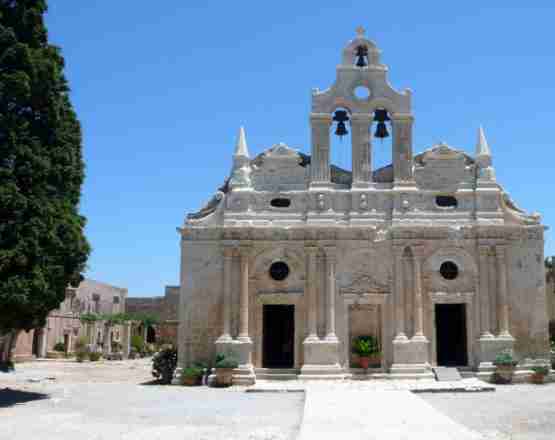JANUARY

It might be a few decades now in Crete that we no longer see the farmer bringing home on the first day of the year the cow home. Hold on a moment a cow? In Crete? A cow in these mountains? All i see here on my arrival are sheep and goats! Yes a Cow, for this blessed animal shall set foot as the first visitor on the first day of the first month of the year! A gentle kind large animal and mother a symbol of strength a blessing visiting the house hold bringing good luck. St.Basil is the saint celebrated on new years eve in Greek Orthodoxy, the patron Saint of those working the fields with animals and protector of the crops. A harmless gentle visitor should be the first visitor so the rest of the year would run smoothly, a visitor that you trusted, a reliable visitor, a companion to your struggles, a hard working companion…so the cow was treated with sweet bread, home made sweets and brought home. Her horns would be decorated with bread jewels, sweets that reassemble the plow are given since the plow symbolizes hard and honest labor. The cow would leave the family well fed, well treated and entertained wiling to work hard and well for the family. New year though is also a celebration loved by children as new beginnings in life then are welcomed and time is sweet when one is young! So the children visit the houses of their village and neighborhood to receive sweets and blessings from the older neighbors. In other villages the icon of the patron Saint was brought home by the women of each family as a blessing. On the first day of the year a plate with sweets and wine was sent to the church of every village for the living to enjoy but also to remember the ones absent. A New Year is a New Beginning, some things though are archetypal… A mother, a wife would give oranges to her loved family members, the fragrance is so strong the fruit so sweet and the color so bright even in winter! Children are often given pomegranates, vibrant red, the multiple seeds symbolizing prosperity and unity of people. A fruit with strong Mythological interpretations, it was the gift given to Persephone by Hades when she was in the underworld…in the realm of Death, but she finds her way back up to the surface of the earth having eaten this fruit, victorious and alive! As Persephone has not yet returned from the underworld in January the earth is frozen…the flowers absent but hope is needed the promise of life light and sun, so women traditionally would find a plant that connected this frozen dormant earth with the underworld and bring it home. This plant with its long wide leafs is a bulb it blossoms even out of the soil. It is known in Crete as The Immortal. An other tradition is the Mantinades the rhymes and songs small poems that are exchanged instead of wishes. Someone who can yield a good Mantinada is well respected.
THE BLESSING OF THE WATERS THE EPIPHANY – 06 OF JANUARY
The blessing of the waters, the baptism of Christ. It is a much older tradition embedded in Christianity, the moment that the God makes an appearance, the Epiphany that we see so very often in the Minoan rings of Crete 1700 B.C. The waters are blessed, but through and by water we arrive and we are christened. After a long service the city, the town the village is blessed and finally the sea. The sea after being blessed becomes calm and from this day onward the sailors can travel safely. The cross is hoisted into the sea by the priest and brave swimmers dive into the freezing sea to retrieve it. The blessing of the waters represents for the Cretans the catharsis of the world, the cosmos is protected and order is reestablished. All water in homes, water given to live stock has to be renewed after the blessing of the waters on the 06 of January. For those away from the sea or rivers, the priest blesses the live stock after blessing the homes of people. Shepherds ask the priest to bless the animals on this day in Crete. On this day farmers fast through all out the country site and give their animals of labor, herds and flocks gifts of fruit nuts and grains, no animal must feel deprived on this day .
ST.JOHN – 07 JANUARY
Saint John the Baptist is celebrated on this day, for after Christ is baptized he has become St.John the Baptist. The children that have been recently baptized receive their first communion, the godfather or godmother visits the god child and family.
ST.PETER – 16 JANUARY, ST.ANTONY – 17 JANUARY, ST.ATHANASIOS – 18 JANUARY
These three saints in the understanding of the Cretan soul are the saints of winter. St.Antony is the saint of the snow capped mountains harsh weather conditions, a saint found in caves in ravines. A hermit, so that’s why we find chapels dedicated to this saint in such remote places. He is the patron saint of those who fight their inner demons as well as all those fighting arthritis. Large fires are set when celebrating St.Antony not only for warmth but for light as it is so very dark mid January for us Cretans who love the sun and the light so much. In Western Crete the area of Sfakia people make bread loafs in human form dedicated to St.Antony. They are taken to church and blessed as St.Antony is seen as a healer, just like the ancient god Asklipios, for in ancient Greece if the soul suffers the body suffers too. Body limbs out of bread votive offerings instead of the ancient Neolithic clay offerings on display in the Archaeological-museum of Heraklion.
THE CELEBRATION OF THE FATHERS OF OUR CHURCH – 30 JANUARY
A celebration dedicated to scholars, schools and all students in all paths of life.



